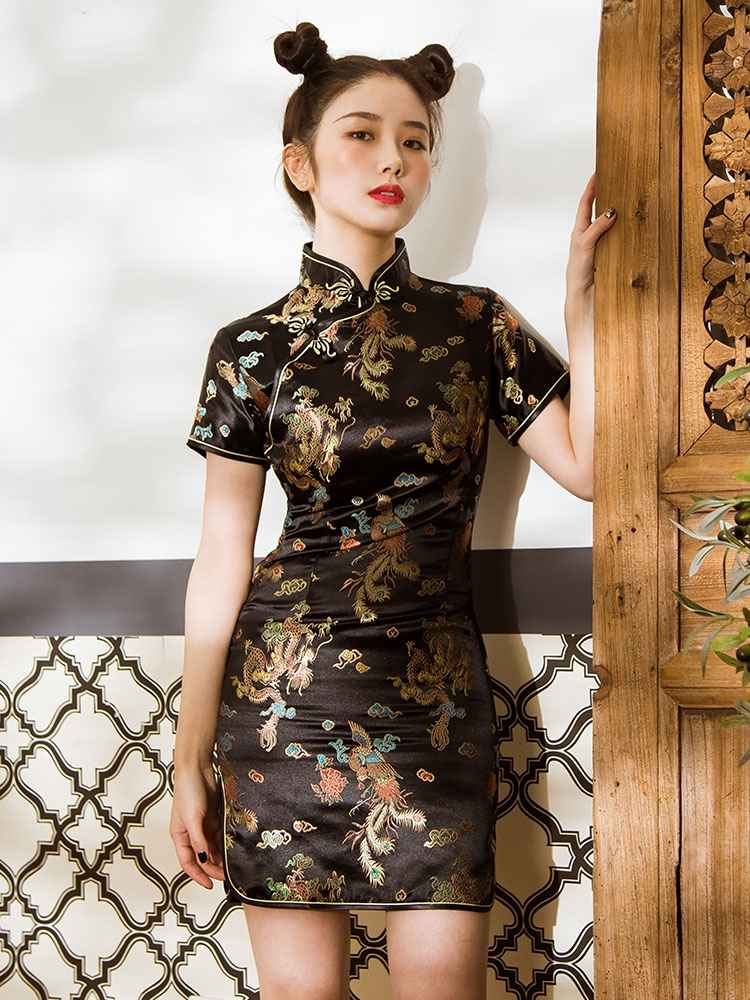
The Modern Qipao: How Millennials and Gen Z Are Redefining Traditional Chinese Fashion
Share
In recent years, the Qipao—once reserved for elegant occasions and nostalgic references to Shanghai’s golden age—has undergone a dynamic revival. No longer just a traditional Chinese dress, it has become a statement of identity, creativity, and cultural confidence for Millennials and Gen Z. Today’s young generation is reshaping how the world sees Chinese fashion—merging tradition with innovation, and heritage with self-expression.
1. The New Face of Tradition
For younger audiences, wearing a Qipao is not about reenacting the past—it’s about reinterpreting it. Designers and fashion enthusiasts alike are creating modern Qipaos that celebrate individuality. Think asymmetric cuts, shorter hemlines, open-back designs, and unexpected fabrics like denim or mesh.
Instead of the tightly tailored silhouettes of old Shanghai, the Gen Z Qipao style embraces comfort and playfulness—combining oversized jackets, sneakers, and streetwear accessories for an effortlessly chic look. This evolution reflects a broader cultural shift: Chinese youth want to honor their heritage without feeling confined by it.
2. The Streetwear Revolution
The fusion of Qipao street style and modern fashion has taken center stage in urban China and beyond. On platforms like TikTok, Xiaohongshu, and Instagram, young creators showcase ways to pair a short Qipao with hoodies, chunky boots, or caps. The contrast of elegance and edge creates a new aesthetic that’s both culturally rooted and globally appealing.
Street-style influencers are redefining the Qipao as casual daily wear—not just a special-occasion outfit. This democratization of traditional fashion allows the garment to fit seamlessly into a global fashion conversation where East meets West.
3. Cultural Pride in a Global Context
For Millennials and Gen Z, the modern Qipao represents more than fashion—it’s a form of cultural storytelling. The growing movement of “Guochao” (国潮)—which translates to national trend—has inspired Chinese youth to embrace local craftsmanship and motifs in contemporary ways.
Many young women and men choose the Qipao as a symbol of identity, proudly integrating it into their modern wardrobes. The designs may include embroidered dragons, lotus flowers, or bamboo patterns, but with a minimalist twist or pastel tone. It’s a way of saying: “I’m modern, but I remember where I come from.”
4. The Power of Social Media
Social media platforms have played a crucial role in the Qipao’s resurgence. On TikTok and Instagram Reels, viral videos feature creators styling Qipaos for various occasions—coffee dates, city strolls, or art gallery visits.
The hashtag #ModernQipao has become a digital movement, inviting global audiences to appreciate Chinese aesthetics beyond stereotypes.
Luxury brands and independent designers alike are also taking note, collaborating with influencers who promote cultural appreciation and creativity. The result is a growing visibility for contemporary Chinese fashion that resonates across cultures.
5. Collaborations and Limited-Edition Collections
Modern designers are reimagining the Qipao through collaborations and limited-edition collections that appeal to Gen Z’s sense of exclusivity and storytelling. Imagine a capsule line where the Qipao meets street couture—featuring eco-friendly fabrics, techwear influences, or bold digital prints.
This intersection of heritage and innovation allows brands to connect deeply with younger consumers who value authenticity, sustainability, and individuality.
6. Beyond Gender and Borders
The new Qipao is also breaking gender and cultural barriers. Designers are crafting androgynous silhouettes, empowering more people—regardless of gender—to wear Qipao-inspired pieces. The global rise of cross-cultural fashion has turned this traditional Chinese dress into a universal symbol of elegance and empowerment.
Whether worn by Chinese diaspora communities or international fashion enthusiasts, the Qipao’s transformation shows how cultural heritage can adapt without losing its soul.
7. The Future of the Modern Qipao
As the lines between culture and fashion continue to blur, the Qipao stands as a living testament to how tradition can evolve gracefully. For Millennials and Gen Z, it’s not just a garment—it’s a voice. A voice that speaks of heritage, creativity, and global identity.
With more designers, brands, and influencers embracing this evolution, the modern Qipao is set to become a lasting icon in the world of contemporary Chinese fashion—a fusion of past and future, East and West, timelessness and trend.
Related Articles:
How to Accessorize Your Qipao: Shoes, Jewelry, and Makeup Pairings
The Symbolism Behind Qipao Patterns: Dragons, Peonies, and Cultural Motifs
Famous Celebrities Who Rocked the Qipao on Red Carpets
Top 10 Qipao Trends in 2025: Colors, Fabrics, and Patterns
How to Style a Qipao for Every Occasion: Weddings, Parties, and Office
Qipao Evolution: From Traditional Chinese Dress to Modern Fashion Icon
Qipao vs. Cheongsam: Which Style Suits Your Modern Wardrobe?
